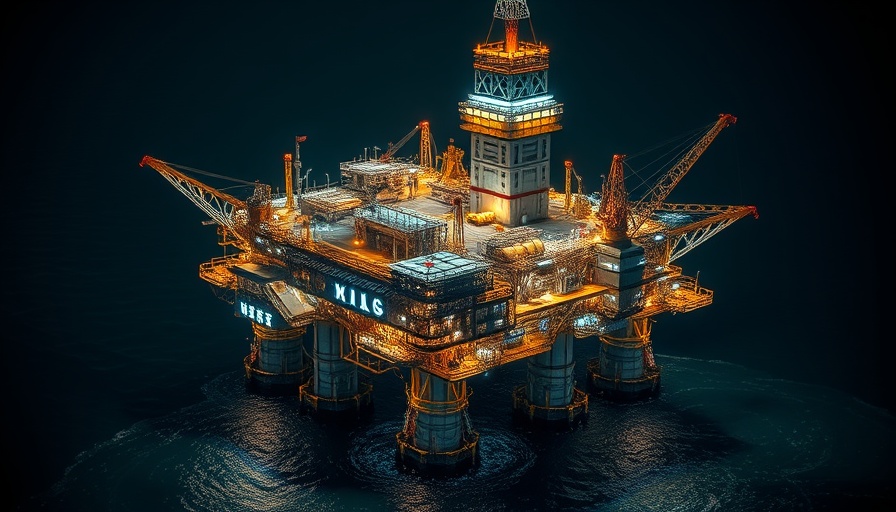
Transformative Oil Discovery in the Gulf of America
A significant development has emerged from the Gulf of America (GOA) with the discovery of the Daenerys field by Talos Energy, marking the first major oil find in five years. Operating from their Houston base, Talos is not only known for traditional oil and gas development but is also innovating in carbon capture and storage (CCS), aligning with the evolving climate concerns. With a recent drilling depth of 33,000 feet, this discovery could enhance their reserves by over 50 million barrels of oil equivalent (MMboe).
A Glance at the Current Oil Production Landscape
The Gulf of America has become increasingly vital to U.S. oil production, accounting for about 15% of the nation’s output in 2023. The region's deepwater wells, defined as those exceeding 1,000 feet, are significant players in this production dynamic, contributing an impressive 94% to GOA's crude supply and 80% of its natural gas production. Talos’s Daenerys field could potentially be a major contributor to this landscape, rivaling other substantial projects such as Shell’s Whale field.
Impacts on Stock and Future Expectations
Despite facing stock declines over the last few years, Talos Energy's latest discovery has injected a sense of optimism into the market. If Daenerys meets ambitious expectations—targeting a production figure near 200 MMboe—it could elevate Talos’s status significantly and potentially restore investor confidence. The current landscape allows for drilling strategies that boost productivity, indicating a possible resurgence in the industry.
Understanding the Historical Context of Oil Discoveries
Looking back, the frequency of significant oil discoveries tends to correlate with political administrations in the U.S. Historical data suggests that significant discoveries peaked during the Trump administration, with a noticeable dip under Biden, and now potentially gaining momentum yet again with Trump’s return. The cyclical nature of oil exploration amidst political changes elucidates a critical context for this discovery.
Diverse Perspectives on Environmental Impacts
While the discovery of the Daenerys field is a boon for Talos and signifies increased oil production, it ignites ongoing debates regarding environmental impacts. Transitioning to renewable and sustainable energy sources is a growing necessity, and the oil industry must navigate the balance between fossil fuel dependence and future sustainability initiatives. This conversation is crucial as climate imperatives become central to energy policies going forward.
Potential for New Economic Opportunities
The potential output from Daenerys presents an opportunity for job creation and economic growth in an industry often criticized for its environmental footprint. The new regulation, enabling stacked plays from one well, could lead to more efficient drilling processes and better resource management, ultimately benefiting local economies dependent on energy sector activities.
Conclusion: The Future of Oil Production in America
The discovery of the Daenerys field is not just a win for Talos Energy; it signifies an important revival of oil interests in the Gulf of America. As we look toward the future, the interplay between oil production and environmental responsibilities will become increasingly important. For industry watchers, investors, and concerned citizens, this development is a reminder of the ever-evolving dynamics of energy resources. The avenues that open up from this discovery will be critical in shaping America’s energy landscape moving forward.
 Add Row
Add Row  Add
Add 




Write A Comment